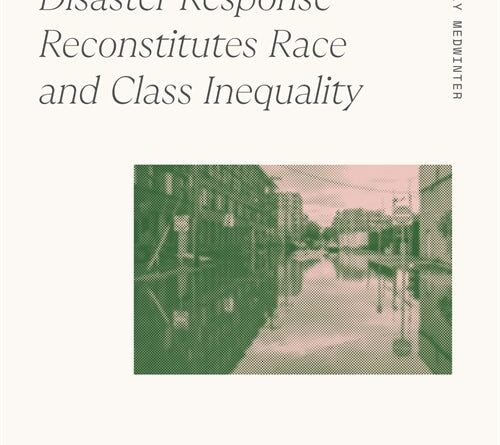The Rising Trend of Billion Dollar Weather Disasters
In 2023, a record-breaking 28 weather and climate disasters resulted in damages exceeding $1 billion each. The subsequent year witnessed 27 such incidents, signaling the persistent upward trend of more destructive natural disasters. It’s pertinent to take into account the disparate impacts of these calamities, that, to a large degree, reflect societal imbalances.
The year started off with a catastrophic wildfire in Los Angeles, resulting in at least 30 confirmed deaths, around 200,000 evacuations, and an appalling destruction of over 16,000 structures. Initially, various factors were held responsible for the wildfire, which later were debunked. It is important to highlight that the choice of residential zones for various population segments has been biased by America’s historical practices such as segregation and redlining.
Usually, these historical prejudices push racial minority communities closer to zones more prone to natural hazards. The disparity in financial resources plays a significant role in community readiness to combat such disasters. Communities with fewer resources struggle to build resilient infrastructure or ensure adequate preparedness levels.
It is unfortunate that an individual’s personal circumstances, such as their financial status, age, or any disabilities, largely influence their experiences during natural disasters. These disasters typically have a more damaging effect on economically disadvantaged individuals, the elderly, and the disabled. Disasters like Hurricane Katrina have laid bare our underpreparedness for such realities over the years.
The lack of consideration for these unequal realities during emergency planning has consistently resulted in patterns of inequality that can be identified in every subsequent natural disaster. However, it’s evident that government-initiated investments for disaster resilience, like flood control systems, stormwater management upgrades, and coastal infrastructure, can effectively mitigate disaster impacts.
Risk consideration is an integral part of effective disaster preparedness and cannot be disregarded. Wealthier communities may be able to afford certain protective measures, such as home fortification or adequate insurance coverage, but destructive disasters that render general infrastructure useless cause trouble for everyone.
Even with individual preparedness measures in place, when essential infrastructures like roads, bridges, schools, or establishments providing healthcare services are destroyed, even the most prepared are left vulnerable. This underlines why community-wide preparedness programs, although more complex, are more important. They are holistic approaches serving entire populations rather than a privileged few who can afford preparedness.
Historical patterns indicate inequitable responses by government agencies to disaster scenarios. Therefore, the pressing need is for the federal government to ensure that the distribution of disaster management resources is fair and caters to every community’s unique needs.
Uniformity in emergency responses at the cost of neglecting the factors of vulnerability and accessibility will hold the nation back from true unity. It will also hinder the government’s ability to plan and respond appropriately to the varying needs of its citizens during disasters. Therefore, inclusivity is not an option, but a requirement.
Federal databases and alert systems serve as invaluable tools for all states. Besides monitoring the risk and tracking climate impacts, they help especially focus on low-income communities. Still, communities are often left to fend for themselves at the first sign of a disaster, when preparation measures fall short.
State offices, such as those in California and Louisiana, play pivotal roles in providing support to groups that are disproportionately at risk during disasters. Despite chronic underfunding from the federal government, these offices are tireless in their efforts to devise and implement effective disaster response and recovery strategies.
In order to avoid repeating the same historical patterns of inequality in future disasters, it’s imperative that each level of government and the communities themselves collectively strive towards creating inclusive and equal strategies that encompass all aspects of disaster management – mitigation, preparedness, response, and recovery.

